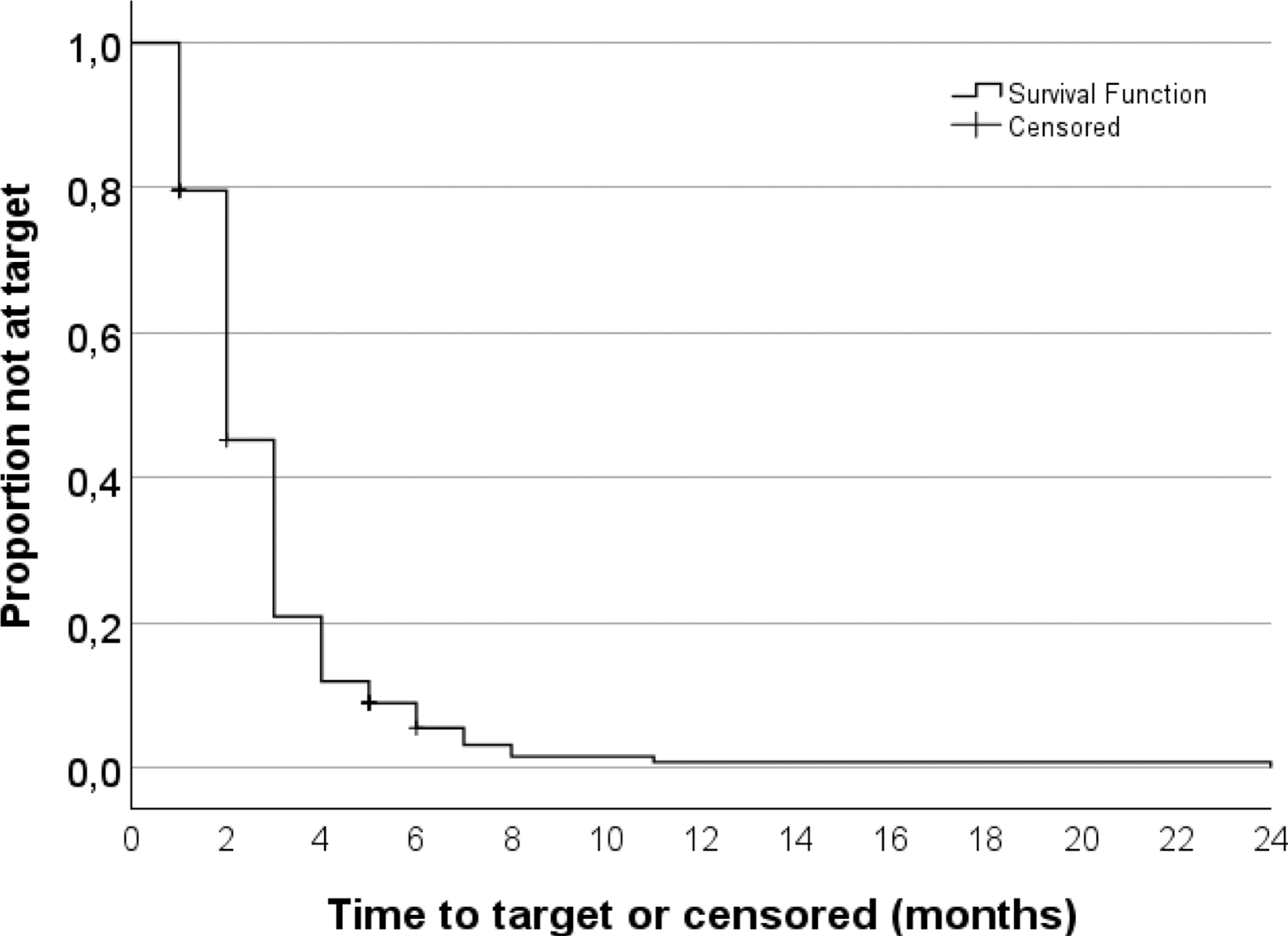

Background: Flares and disease burden with monosodium urate crystal deposition in joints, as well as reduced health-related quality of life affect gout patients with increased serum urate (sUA) levels. Urate lowering therapy (ULT) with allopurinol or other drugs are internationally recommended to avoid flares and to obtain disease remission in gout. We lack knowledge on how fast intensive ULT can reach sUA target levels.
Objectives: To explore how fast patients during escalating ULT reach the sUA target <360 µmol/L (<6 mg/dl) and at which dose allopurinol.
Methods: The prospective NOR-Gout study included patients with a recent gout flare and increased sUA >360µmol/L as well as preserved kidney function (>45 ml/min/1.73 m 2 glomerular filtration rate). All patients were treated with ULT and monthly control visits during one year until sUA was <360 µmol/L (<300 µmol/L if subcutaneous tophus). Allopurinol was given as first drug with starting dose 100 mg and monthly escalation with 100 mg up to maximum 800 mg and then maintained dosage once the treatment target was reached. In case of intolerance or lack of additional effect on sUA level during dose escalation, febuxostat was started at 40 mg daily with monthly increase 40 mg until maximum 120 mg daily. After year 1 patients were followed by their general practitioner to keep the ULT target and then met for evaluation at year 2. A Kaplan Meier plot was used the display the time until reaching the sUA target level of <360 µmol/L.
Results: Of 211 included patients 95.2% were males, mean (SD) age was 56.7 (13.7) years, disease duration 8.1 (7.9) years, and 16.6% had clinical tophi, 14.7% of patients used at baseline ULT with allopurinol mean dose 151 (109) mg. sUA (SD, μmol/L) was reduced from 500 (77) at baseline, to 312 (49) at 1 year and 325 (70) at 2 years. The sUA treatment target was at least reached once by 93.4% (197/211) during year 1 and by one additional patient (i.e. 93.8%) during year 2. The Kaplan Meier plot shows that time to reaching the treatment target was median 2 months (mean 2.9 months), and for 20% of patients only 1 month (Figure 1). Patients starting with sUA >480 µmol/L needed median 3 months to reach target sUA vs. 2 months for patients with sUA<480 µmol/L (Log rank p<0.001). At visit after 1 year (2 years), the treatment target was maintained reached by 85.5% (78.6%). Eleven patients did not achieve the treatment target or were censored due to not meeting for follow-up. At year 1 mean allopurinol (SD) dose was 289 (120) mg, and 12.5% of patients had switched to febuxostat with a mean (SD) dose of 59 (24) mg. When reaching the treatment target with allopurinol (n=186) the median dose was 200 (range 100-800, interquartile range 100) mg.
Conclusion: Patients with gout who are treated with internationally recommended intensive ULT reached the treatment target after median 2 months, or after 3 months if initial sUA >480 µmol/L. Only about 5% of patients did not achieve the treatment target at least once during one year with intensive ULT. Our findings indicate fast and effective ULT and support the treat-to-target principle in gout.
REFERENCES: [1] Uhlig et al. RMD Open 2021: e001628.

Acknowledgements: NIL.
Disclosure of Interests: None declared.
© The Authors 2025. This abstract is an open access article published in Annals of Rheumatic Diseases under the CC BY-NC-ND license (